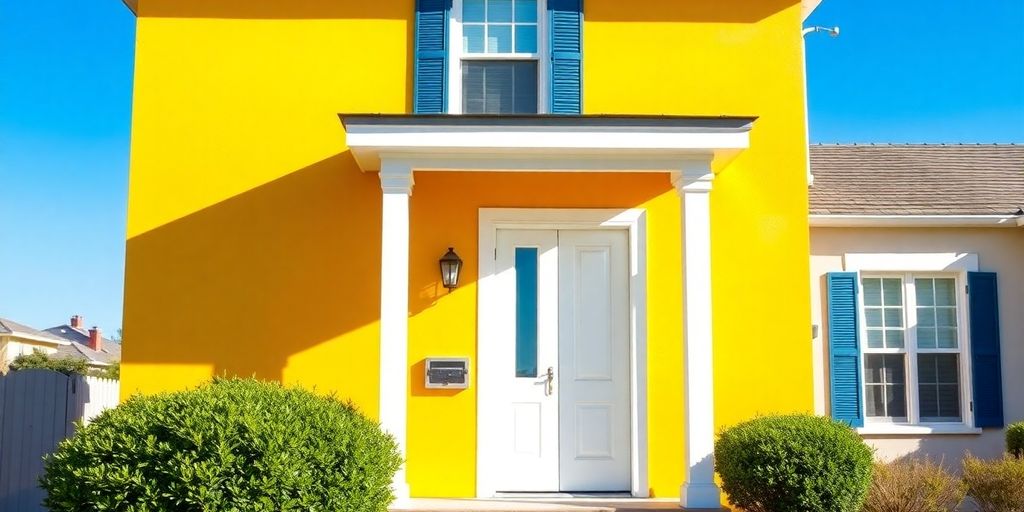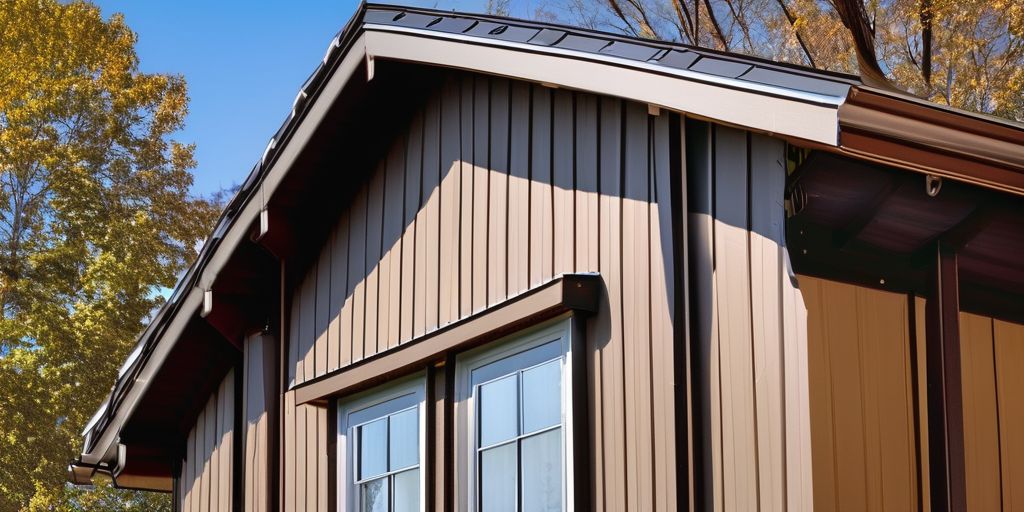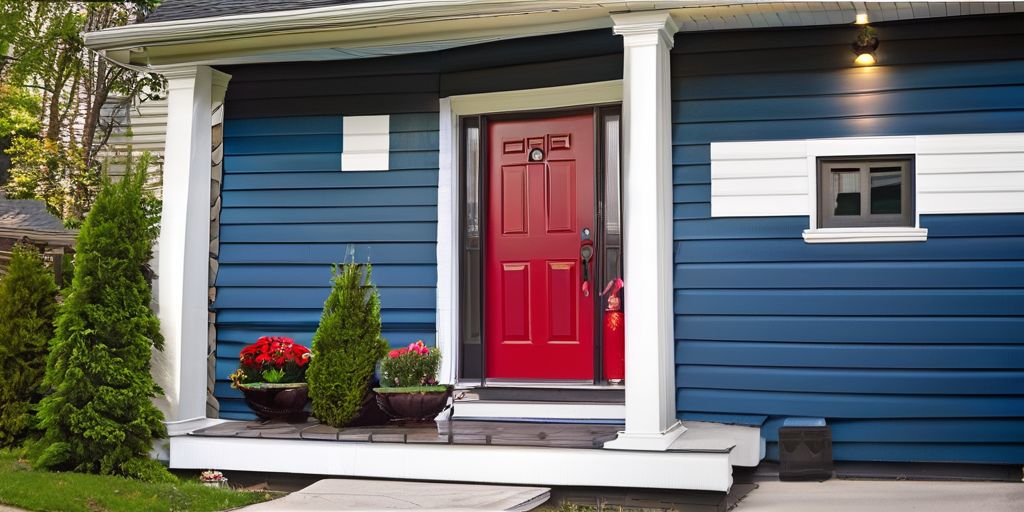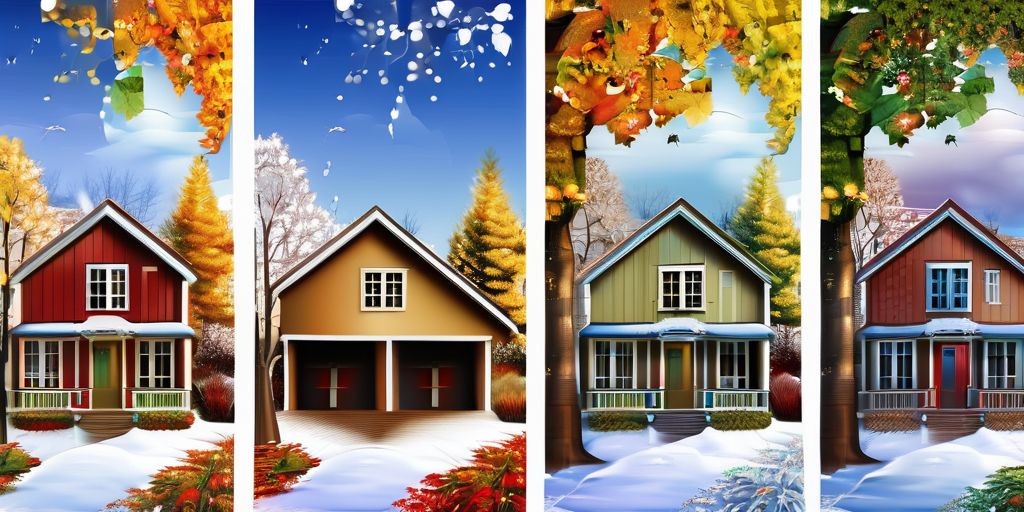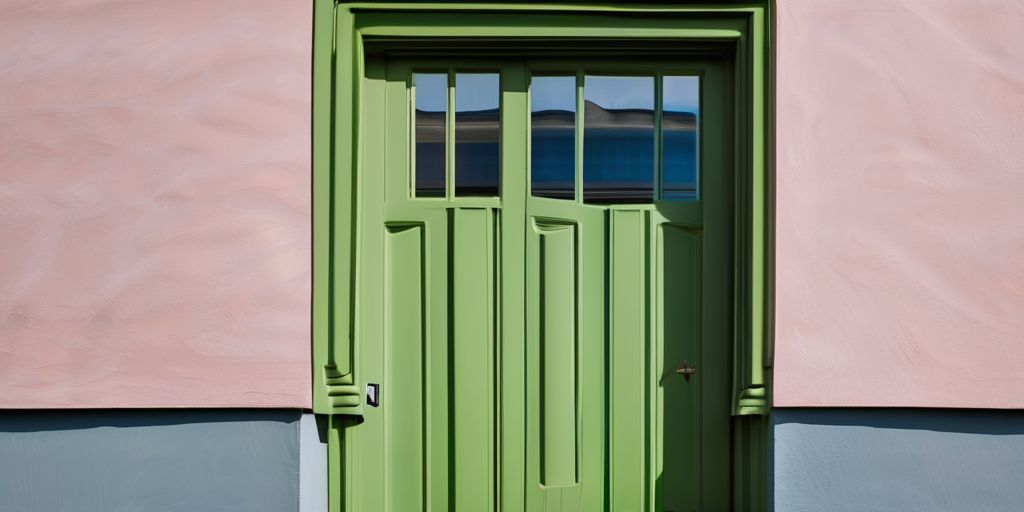Ever slap on a coat of paint and wonder, “How long does it take paint to dry?” You’re not alone. Whether you’re sprucing up your living room or tackling a big renovation, knowing the drying time is key. It can mean the difference between a smooth finish and a sticky mess. Let’s dive into the ins and outs of paint drying times so you can get your project done right.
Key Takeaways
- Paint drying times vary based on type: water-based paints dry faster than oil-based ones.
- Environmental factors like temperature and humidity can speed up or slow down drying.
- Proper surface prep and ventilation can significantly reduce drying time.
- Rushing between coats can ruin the finish; always check the recommended wait time on the can.
- Understanding the difference between ‘dry to touch’ and ‘fully cured’ is crucial for durability.
The Basics of Paint Drying Times
Understanding Drying vs. Curing
When you paint a surface, it’s important to know the difference between drying and curing. Drying is when the paint feels dry to the touch, but curing is when it has fully hardened and reached its maximum durability. This can take days or even weeks, depending on the paint type.
Factors Influencing Drying Time
Several factors can affect how quickly paint dries:
- Type of Paint: Water-based paints dry faster than oil-based ones.
- Environmental Conditions: Temperature and humidity play a big role. Warm, dry air speeds up drying, while cool, damp air slows it down.
- Surface Material: Different surfaces absorb paint differently, affecting drying times.
Common Paint Types and Their Drying Times
Here’s a quick look at how long different types of paint typically take to dry:
| Paint Type | Touch Dry Time | Full Cure Time |
|---|---|---|
| Water-Based | 2-4 hours | 24 hours |
| Oil-Based | 6-8 hours | 7 days |
| Enamel | Varies | Up to 14 days |
Remember, these times can vary based on the conditions mentioned above. If you’re painting over stained surfaces, make sure the first coat is completely dry before adding another layer.
Taking the time to let paint dry properly can make a big difference in the quality and longevity of your finish.
Exploring Different Types of Paint
Water-Based Paints: Quick and Easy
Water-based paints, also known as latex paints, are a favorite among DIY enthusiasts. They dry quickly, usually within 2-4 hours, making them perfect for projects that need a fast turnaround. One of the biggest advantages is their easy cleanup with just soap and water. They’re also environmentally friendly, which is a big plus for those conscious about their impact on nature. If you’re painting a space like a bathroom, consider using a primer that suits humid environments to ensure the paint adheres well.
Oil-Based Paints: Durable but Slow
Oil-based paints are known for their durability and rich finish. They take longer to dry, often needing 6-8 hours to be touch dry and up to 24 hours to fully cure. This makes them ideal for areas that require a strong, resilient finish. However, they require mineral spirits or turpentine for cleanup, which can be a bit of a hassle. For exterior projects, especially in humid areas, oil-based paints can offer superior protection and longevity, as detailed in our guide on choosing exterior paints.
Enamel Paints: Hard and Glossy
Enamel paints provide a hard, glossy finish and can be either water-based or oil-based. Their drying times vary, but they generally take longer than other paints to dry. This makes them suitable for surfaces that need a tough, durable coating. If you’re painting metal surfaces, make sure to follow the primer’s instructions carefully to ensure the best results.
When choosing paint, consider the specific needs of your project. Whether it’s the quick drying time of water-based paints or the robust finish of oil-based options, the right choice can make all the difference in achieving a professional-looking result.
Environmental Factors Affecting Paint Drying
The Role of Temperature and Humidity
Temperature and humidity are major players when it comes to paint drying. Temperature affects how quickly the paint dries. If it’s too hot, the paint might dry too fast, leading to cracks or an uneven finish. On the flip side, if it’s too cold, the paint takes its sweet time to dry, which can be a pain if you’re in a hurry. Aim for temperatures between 50°F and 85°F for most paints. Humidity is another factor. High humidity means there’s too much moisture in the air, which can slow down the drying process. Ideally, keep humidity levels below 50% to get the best results.
How Ventilation Speeds Up Drying
Good ventilation is like a secret weapon for drying paint quickly. Open windows, use fans, or even a dehumidifier to move the air around. This helps the paint dry more evenly and can prevent issues like peeling or bubbling. Plus, if you’re painting indoors, proper ventilation keeps those strong paint smells from lingering too long.
The Impact of Wind on Drying Times
Wind can be a bit tricky. A gentle breeze can help speed up drying by helping the solvent evaporate faster. But too much wind? That can cause the paint to dry too quickly, leading to an uneven finish or even imperfections. So, if you’re painting outside, a calm day is your best friend. Avoid those super windy days to ensure your paint job turns out just right.
When painting in the Brantford area, be mindful of the local weather conditions. The wind can be unpredictable, especially near landmarks like the Bell Homestead National Historic Site, which might make your painting project a bit more challenging.
Surface Considerations for Optimal Drying
When painting, the type of surface you’re working on can significantly affect how quickly your paint dries. Let’s explore some common surfaces and how they influence drying times.
Painting on Wood: Challenges and Tips
Wood is a popular material, but it can be tricky when it comes to paint drying. Here are some key points to consider:
- Surface Preparation: Ensure the wood is clean and dry. Sanding the surface can help the paint adhere better.
- Primer Use: Applying a primer can seal the wood, leading to more even drying.
- Oil-based paint typically takes longer to dry on wood, so patience is essential.
Metal Surfaces: Fast Drying Insights
Metal surfaces can be a bit easier to paint, but they still come with their own set of challenges:
- Temperature Sensitivity: Metal can conduct heat, affecting drying times. Try to paint when temperatures are moderate.
- Humidity Effects: High humidity can cause paint to take longer to dry on metal.
- Use a rust-inhibiting primer to avoid corrosion and ensure a smooth finish.
Drywall: Preparing for Best Results
Drywall is common in many homes, and getting the paint to dry properly requires some preparation:
- Surface Repair: Fix any imperfections with spackle and allow it to dry completely before painting. This helps achieve a perfect paint match.
- Even Coating: Apply thin, even coats of paint to avoid drips and ensure quicker drying.
- Ensure the room is well-ventilated to speed up the drying process.
Proper preparation and understanding of the surface you’re painting can make all the difference in achieving a smooth, even finish. Remember, patience and attention to detail are your best friends when it comes to painting.
Practical Tips for Faster Paint Drying
Proper Surface Preparation
Getting the surface ready before painting can make a significant difference in drying time. Here’s what to do:
- Clean the Surface: Remove any dirt, dust, or grease. A clean surface helps paint adhere better and dry faster.
- Sand if Necessary: Sanding the surface can create a smoother area for the paint to grip, reducing drying time.
- Prime the Surface: Using a primer can seal the surface and help the paint dry more evenly.
Using the Right Tools and Techniques
The tools you use can impact how quickly your paint dries:
- Choose high-quality brushes or rollers for an even coat.
- Apply paint in thin layers. Thick coats take longer to dry and may lead to drips or uneven finishes.
- Consider using a paint roller, which can help spread paint more thinly than a brush.
Enhancing Ventilation for Quicker Drying
Improving airflow in the painting area is crucial:
- Open windows or use fans to increase air circulation. This helps solvents in the paint evaporate faster.
- Avoid painting in high humidity areas, as moisture in the air can slow down the drying process.
- For exterior jobs, avoid windy days that might introduce debris into your wet paint.
In Brantford, taking advantage of a breezy day by the Grand River can help your outdoor paint dry faster, but be cautious of too much wind that might cause uneven drying.
By following these simple steps, you can ensure your paint dries efficiently and evenly, giving you a smooth and professional finish.
Avoiding Common Painting Mistakes
The Dangers of Impatience
When you’re painting, waiting can feel like forever, especially when you’re eager to see the final result. But patience is key. Touching the paint too soon can leave smudges and fingerprints. Even if it feels dry to the touch, the layers underneath might still be wet. Always follow the recommended drying times.
- Don’t rush to apply a second coat. This can lead to uneven surfaces.
- Avoid touching the paint to check dryness.
Why Overcoating Too Soon is a Problem
Applying a second coat before the first one is fully dry can ruin your paint job. Here’s why:
- Peeling and Bubbling: The underlying coat may still be wet, causing the new layer to peel or bubble.
- Uneven Texture: Wet layers can lead to clumping and an uneven finish.
- Extended Drying Time: Overcoating too soon can make the paint take longer to dry overall.
Weather Considerations for Painting
Weather plays a big role in how paint dries. Here’s what to keep in mind:
- Humidity: High humidity levels slow down the drying process because the air is saturated with moisture.
- Temperature: Cold weather can make paint dry slower, while very hot weather can cause it to dry too fast and crack.
- Wind: A breeze can help paint dry faster, but too much wind might lead to uneven drying.
Remember, painting isn’t just about the brush strokes. Timing and conditions are just as important. Whether you’re in Brantford or anywhere else, consider the local weather before starting your project.
By avoiding these common mistakes, you can ensure a smoother, more professional-looking finish. If you want more professional painting tips, check out our other articles.
Understanding Paint Components
The Role of Pigments and Binders
Paint is much more than just a splash of color. At its core, it consists of several key components, each contributing to its performance and drying time. Pigments are responsible for providing the paint’s color. These tiny particles can also affect how quickly the paint dries, depending on their composition.
Binders, on the other hand, are like the glue that holds everything together. They ensure that the pigment particles stick to the surface, which is crucial for a smooth finish. The type of binder used can significantly impact the drying time, with some formulas drying faster than others.
Solvents and Their Evaporation
Solvents play a critical role in keeping paint in a liquid state for application. Once applied, these solvents evaporate, allowing the paint to dry. In water-based paints, water acts as the solvent, making them easier to clean and quicker to dry. Oil-based paints, however, rely on organic solvents, which tend to evaporate more slowly, resulting in longer drying times.
Additives: Enhancing Paint Properties
Additives are the unsung heroes of paint, enhancing its properties in various ways. They can improve durability, provide resistance to mold, or even accelerate the drying process. The choice of additives can make a big difference, especially when painting in challenging conditions like high humidity or low temperatures.
When planning your painting project, consider how each component of the paint can affect the drying time and final result. From pigments and binders to solvents and additives, understanding these elements can help you choose the right paint for your needs.
Whether you’re painting the plastic siding or tackling an outdoor brick project, knowing the components of paint can guide you to a successful finish.
Timing Your Painting Project
Guidelines for Recoat Times
When it comes to painting, patience is your best friend. Knowing when to apply the next coat is crucial for a smooth finish. Here’s a simple guide:
- Water-Based Paints: Usually, you can safely apply a second coat after 2 to 4 hours. However, if you’re in a humid area, like near the Grand River in Brantford, it might take a bit longer.
- Oil-Based Paints: These need more time. Wait at least 24 hours before adding another layer.
- Always check the paint can for specific instructions, as times can vary based on brand and type.
Planning for Cure Times
Cure time is different from drying time. It’s when the paint reaches its full hardness and durability. Here’s what to keep in mind:
- Water-Based Paints: Typically take about 30 days to fully cure. During this time, be gentle with the surface.
- Oil-Based Paints: These can take 7 to 14 days to cure completely.
Remember, even if the paint feels dry to touch, it’s not fully cured until it reaches its maximum hardness.
Balancing Drying and Weather Conditions
Weather plays a big role in how quickly your paint dries and cures. Here are some tips:
- Temperature: Ideal temperatures for painting are between 50°F and 85°F.
- Humidity: Keep it below 50% for the best results.
- Wind: A light breeze can help, but too much wind can cause uneven drying.
If you’re planning to paint exterior wood siding, consider these factors to ensure the best finish. Always plan your project around the weather forecast to avoid unexpected rain or extreme temperatures.
By understanding these timing aspects, you can ensure a successful painting project that looks great and lasts long.
Professional Insights on Paint Drying
Expert Tips for a Flawless Finish
When it comes to achieving a perfect paint finish, professionals have a few tricks up their sleeves. Here’s a peek into their toolbox:
- Surface Preparation: The key to a smooth finish is a well-prepped surface. This means cleaning, sanding, and priming as needed.
- Layering Techniques: Applying multiple thin coats instead of one thick layer helps in achieving a uniform look.
- Timing: Professionals often paint during optimal environmental conditions, avoiding extreme temperatures or humidity.
Common Myths About Paint Drying
There are plenty of myths floating around about paint drying. Let’s bust a few:
- Myth: Adding more heat speeds up drying. Truth is, while warmth helps, too much can cause cracking.
- Myth: Thick layers dry faster. In reality, thinner layers dry more evenly and quickly.
- Myth: All paints dry at the same rate. Different types of paint have varying drying times.
When to Seek Professional Help
Sometimes, a painting project can be more than a DIY enthusiast can handle. Here’s when you might want to call in the pros:
- Large-scale projects that require specialized equipment or techniques.
- When dealing with intricate details or challenging surfaces like textured walls or ceilings.
- If you’re unsure about the type of paint or finish best suited for your project.
Remember, patience is key when painting. Rushing can lead to imperfections and longer-term issues.
If you’re in the Brantford area, consider visiting the Bell Homestead National Historic Site. It’s a great example of how proper paint maintenance can preserve the beauty of historic buildings.
The Science Behind Paint Drying
Chemical Reactions in Drying
When you paint a wall, it’s not just the color that changes. There’s a whole chemical process happening behind the scenes. Paint drying involves chemical reactions that transform the liquid paint into a solid film. This change is due to the evaporation of solvents and the polymerization of binders. These reactions are crucial because they determine how quickly and effectively the paint dries.
The Difference Between Dry and Cured
Understanding the difference between paint being ‘dry’ and ‘cured’ is important. Dry means the paint is no longer wet to the touch, but curing is when the paint has reached its maximum hardness and durability. Curing can take days or even weeks, depending on the paint type and environmental conditions. For instance, latex paints might dry in a few hours but take up to 30 days to cure fully.
How Paint Formulas Affect Drying
The formula of the paint plays a big role in drying times. Paints have different components like pigments, binders, and solvents, each affecting the drying process. For example, oil-based paints dry slower because their solvents evaporate at a slower rate compared to water-based paints. Additives in paint can also modify drying times, making them faster or slower.
In Brantford, the humidity levels can influence how fast your paint dries, so always check the weather before starting your project. This little detail can make a big difference in the outcome of your painting job.
Have you ever wondered how paint dries? It’s not just about waiting for it to become hard; there’s real science behind it! When you apply paint, it goes through a process of evaporation and chemical changes that help it stick to surfaces. If you’re curious to learn more about this fascinating topic, visit our website for detailed insights and tips on how to make your paint job last longer!
Wrapping It Up
So, there you have it! Knowing how long paint takes to dry isn’t just about watching paint dry—it’s about getting the best results for your project. Whether you’re sprucing up your living room or tackling a big outdoor job, giving your paint the right time to dry and cure is key. Remember, different paints and surfaces have their own quirks, so always check the label and be patient. A little extra wait can make a huge difference in how your finished project looks and lasts. Happy painting!
Frequently Asked Questions
How long does it usually take for paint to dry?
The drying time for paint varies by type. Water-based paints typically dry to the touch in 2-4 hours, while oil-based paints can take 6-8 hours.
What affects how fast paint dries?
Several factors, including the type of paint, temperature, humidity, and airflow, can influence how quickly paint dries.
Can I speed up the paint drying process?
Yes, you can speed up drying by ensuring good ventilation, using fans, and painting in a warm, dry environment.
Why is it important to let paint dry completely?
Allowing paint to dry fully ensures a smooth finish and helps prevent issues like smudging, peeling, or uneven surfaces.
What is the difference between paint drying and curing?
Drying is when the paint feels dry to the touch, while curing is when the paint has reached its full hardness and durability.
How long should I wait between coats of paint?
For water-based paint, wait 2-4 hours between coats. For oil-based paint, it’s best to wait 24 hours.
Does the surface type affect drying time?
Yes, surfaces like wood can take longer to dry, while metal surfaces might dry faster due to their smoothness.
What should I do if the paint is taking too long to dry?
Check for high humidity or low temperatures, and try increasing airflow with fans or opening windows to help speed up the process.

